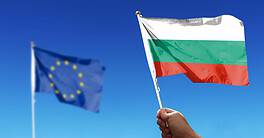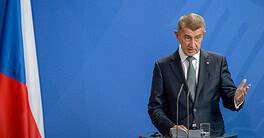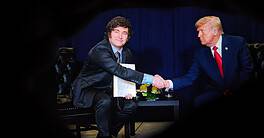Banks are rushing to mitigate the economic impact of Covid-19. Some systems are better prepared than others.

With central banks around the globe moving quickly to pump liquidity into financial markets in an effort to counter the supply shock and stunning collapse of demand caused by the coronavirus pandemic, the creditworthiness of most major banks appeared assured, at least in the short term. The question remains whether a looming deep recession will reduce demand for loans, which are the banks’ bread-and-butter business, and whether banks will react by curtailing lending to avoid what one analyst has called “catching a falling knife.”
A survey of bank analysts by Global Finance indicates that most banks are now in far better shape than they were during the 2008 financial crisis, when many required government bailouts to avoid bankruptcy.
“Major banks are more a source of strength now than a source of weakness,” says Joe Scott, managing director at Kroll Bond Rating Agency. “There has been a sea change in funding management and liquidity.” In 2008, he notes, banks were overlevered, relied too much on short-dated funding and held more off-balance sheet derivatives.
The Federal Reserve has reacted forcefully in recent weeks, deploying many of the same tools it used in 2008: cutting interest rates to near zero and assuring banks they could use assets normally held aside as reserves—the reserve requirement was cut to zero on March 16—and establishing credit buffers to promote lending to hard-hit companies and consumers. The Fed also threw open the so-called discount window to any banks that need to borrow money because of a rush of deposit outflows, although in the past banks have been hesitant to take advantage of the offer to avoid sending a signal that they are distressed.
New Accounting Requirement
That’s the good news. But a new accounting system the Fed put into effect on January 1 may require banks to boost reserves at a time when the Fed wants them to use reserves to lend.
In the US, the new method is called Current Expected Credit Losses. Under CECL, banks must estimate what their lifetime losses would be for their loan portfolios; the previous method was just-in-time accounting that separated loans into buckets and assigned reserves to each bucket depending on its riskiness.
The CECL reserves may need to be adjusted sharply upward because of their deteriorating outlook, Kroll warns. “Banks—particularly those that lend to consumers, and who warned in the last quarter that the mix of CECL amid a recession could lead to a credit crunch—could pull back from providing liquidity to borrowers in an effort to conserve core capital,” Kroll said in a note.
Credit stress is certain to increase because of the cash crunch in certain sectors of the economy, including airlines, hotels and restaurants, says Daniel Ahn, chief US economist at BNP Paribas. However, “it does look like banks have the capacity to absorb the shock unless things get much worse.”
This, again, is an indicator of how far banks have come since the 2008 crisis. The Federal Reserve Bank of Boston said in a recent study that Tier 1 capital ratios, which are core capital as a percentage of risk-weighted assets and a measure of a bank’s ability to deal with a sudden crisis, had plunged to around 5% in late 2008 at major banks. They were 13% in 2019.
Nonetheless, the reduction in the Fed funds rate, which is used to set many other interest rates, will negatively hit banks’ net interest margin (NIM), which represents the difference between the interest rate at which an institution borrows funds and the rate at which it lends, which is a major source of profits. In a note to investors, Goldman Sachs recently said that prolonged zero interest rates could reduce banks’ NIMs by 46 basis points over time and could cut the return on shareholder common equity by four percentage points. JPMorgan Chase, the largest US bank by assets, reported a NIM of 2.49% in 2019.
Trading volumes and fees earned for services such as bond issuance and mergers and acquisitions advisory are likely to collapse in the next quarter as well because so much of this business has ground to a standstill.
Another vulnerable area is trade finance, which the Bank for International Settlements estimates at up to $8 trillion a year. Some $2.8 trillion comes from letters of credit issued by banks, but with global trade stymied as borders are shut and transport halted, that business, too, may dry up until a recovery gains traction.
An immediate concern is for banks that are heavily exposed to the oil industry, which was already suffering from the ongoing price war between Saudi Arabia and Russia. For most major banks, energy represents a tiny amount of their loan portfolios, but smaller banks in Texas and Oklahoma have been hammered.
“I think there’s a disproportionate impact on those who have much bigger exposure to the oil and gas business,” says Nathan Stovall, bank analyst at S&P Global Market Intelligence, noting that smaller banks whose loan portfolios have direct exposure to energy lending have seen their share price fall by more than 20% since the price war began.
Stress Tests Pay Off
Longer term, with unemployment claims rocketing upward and businesses laying off employees in response to closed stores and empty hotels and airports, banks are concerned about rising defaults on such facilities as consumer loans. The two banks with the largest credit card portfolios, Citigroup and Capital One, have both seen their share price halved since the crisis began as investors worry about card defaults, which tend to track to the unemployment rate.
Nonetheless, US banks are now considered by many analysts to be the soundest globally, thanks to the package of measures adopted after the Great Recession, including annual stress tests. Major US institutions were also required to hold high-quality liquid assets that would cover outflows over a 30-day period of crisis. Known as the liquidity coverage ratio, it differs according to the size of the bank’s assets.
European banks took much longer than their US counterparts following the 2008–2009 downturn to reduce their stock of nonperforming loans and to adopt practices like stress testing to improve risk management. The European Central Bank effectively has negative interest rates and announced a major bond-buying program in an effort to shore up the continental economy by increasing liquidity in the markets. The condition of banks in China is another worry point since many were already loaded with debt before the coronavirus crisis forced the lockdown of major cities. Nonperforming loans are expected to surge to $1.1 trillion this year because the economy has been idled for so long, according to S&P Global.
In contrast to the European and Japanese central banks, the Fed has argued that the cost of negative interest rates would be greater than the benefits. That’s primarily because of the huge amount of money parked in money market funds, which it fears would flee if rates turned negative.
With their stronger balance sheets, US banks also have reason to think that multinational companies will migrate their banking activities to US institutions as part of their risk reduction measures, KBRA’s Scott argues.
The great unknown for banks is the extent to which demand for loans will fall in a recession, particularly if it’s a steep one. “We simply don’t know the extent to which demand will decline,” says Nicholas Economides, professor of economics at New York University’s Stern School of Business. “While certain sectors like airlines are falling, we are going to need a few more weeks to determine what the real effects will be on general demand.”
With the corporate bond market frozen since the start of the crisis, a number of major companies have started drawing down lines of credit to ensure they have sufficient funding to navigate through months of declining sales. Boeing has drawn down a $13.8 billion loan, for example. Despite such activity, analysts say corporate borrowing in aggregate tends to decline during a recession as businesses rein in their spending on items such as new factories and equipment.



